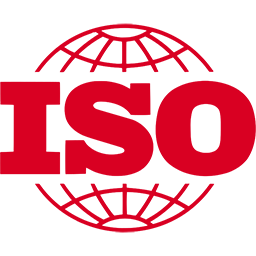
After the recovery of Japan's war-torn economy, the issue of machine maintenance came to the fore. The production plants worked using preventive and productive maintenance methods, which were imported from the USA. They were based on the idea of preventing the failure before it occurred, thus saving the money needed to rebuild the equipment. In addition, the intervention in the facility went according to plan, which was much more effective than in the event of an unplanned failure.
Preventive and productive maintenance required the use of qualified maintenance professionals to take care of the machines. Operators were considered part of the process and should not be involved in maintenance.
However, the situation was different in companies considered as assembly plants. The production process was based on simple operations that were performed on expensive equipment. Therefore, the company could not afford to destroy the equipment due to neglect of regular, daily inspections and minor maintenance.
In the 1950s, Seiichi Nakajima, a consultant at the Japanese Plant Maintenance Institute, began implementing a new maintenance program at Nippon Denso. The visible impact on improving the company's performance after the introduction of TPM was so inspiring that not only customers, including Toyota, but also competitors and companies for which TPM was not originally intended became interested in the program. This group includes, for example, chemical plants, steel mills, but also food plants. Interestingly, it is these companies that have become the bearers and exemplary examples of the correct application of TPM.
The first novelty is the change in the role of operators. The TPM requires the operator to be actively involved in maintenance. There is no need to perform any maintenance alone, it would be inefficient. He should try to keep the machine running by checking, cleaning and lubricating it regularly. The task of the operator is to keep the machine in basic conditions. This is a condition where the wear of the device is caused only by the natural degradation of its parts, not by excessive contamination, incorrect adjustment, leakage of lubricants or other media.
In a very simplified way, the operator's approach can be compared to the vehicle owner's approach. Although he is responsible, he regularly washes and cleans the car, checks the functionality of, for example, the bulbs, the oil level, brake fluid, wiper condition and tire pressure. The owner of the car, the owner, treats his vehicle responsibly to make it work reliably. The operator should also take care of his equipment. The result is a significant reduction in failures due to neglect of basic maintenance.
The second TPM innovation is the introduction of indicators that have been able to objectively assess the condition of the facility and its main problems. OEE (Overall Equipment Effectiveness) has become the most important. The OEE is based on the theory of zero losses. This means that the device is maximally efficient if it works continuously, at maximum speed and without producing failures. This ideal state cannot be achieved, but it is necessary to get as close as possible to it.
OEE includes three types of losses. Loss of availability, loss of performance and loss of quality.
Equipment availability losses are all losses caused by outages. These include planned losses (alignment, overhaul of the machine, cleaning, preventive maintenance), but also unplanned losses (failures, outages due to jams).
Machine power losses capture a situation where the device is not operating at maximum power. These include, for example, small, second stops, decelerations. Their reasons may vary, but most are unplanned losses.
Qualitative loss of time spent producing nonconforming products. By unsuitable product we mean a piece that needs to be discarded, but also reworked. The device should ideally produce a matching piece for the first time.
OEE is then the product of all three types of losses. The ideal condition that can occur is OEE = 100%. But the reality is different, of course. Top companies achieve OEE at the level of 85%, on average around 60%. Prior to the introduction of the TPM, there is no exemption for OEE below 40%.
Another indicator is MTBF (Mean Time Between Failures), i.e. the average time between failures. MTBF characterizes the technical condition of the equipment. The shorter the time between the two failures, the worse the condition. The role of the TPM is to extend time, and if successful, the MTBF will often increase up to 15 times.
The indicator describing the quality of the maintenance intervention is called MTTR (Mean Time To Repair), i.e. the average repair time. This is the time it takes maintenance to restart the device. It is affected by the maintenance man's abilities, but also the availability of spare parts, tools, the way the fault is communicated, the availability of the maintenance man, as well as the construction of the equipment.
The basis of TPM is the introduction of order in the workplace. You can't work effectively in chaos and dirt. Therefore, before implementing TPM, an organization must implement 5S as part of its own culture. It is true that management should be the bearer of change, it must lead by example and therefore 5S is implemented not only on the lines, but also in warehouses, ancillary facilities and administration. The successful implementation of 5S will change the attitude of employees, as they will consider the workspace as their own and will try to improve it themselves. If the 5S fails to deploy, the TPM deployment is doomed to failure.
Because the TPM requires a change in the approach to maintenance, it is necessary to create teams of workers who will have parts of the TPM under their patronage. Teams, called pillars, must work together for one goal: to increase reliability, safety and quality of production. TPM represents eight pillars, whose activities cover the entire area of the company's activities.
|
Pillar |
The role of the pillar |
How will his activity manifest itself |
|
Autonomous Maintenance |
Delegates responsibilities for simple maintenace activitie such as cleaning, inspection and lubribrication to operators |
|
|
Planned Maintenance |
Plans preventive and predictive maintenance activities |
|
|
Quality maintenance |
Detects the capture and prevention of errors Eliminates repetitive errors using root cause analysis |
|
|
Focused improvement |
Manages small teams of highly skilled professionals to continualy proactively find and eliminate problems through small incremental improvements |
|
|
|
Transfers practical knowledge from TPM to improved design of new equipment and products |
|
|
Training and Education |
It fills the knowledge gaps of operators, maintainers and management in linking to TPM objectives |
|
|
Safety, Health and Environmet |
Maintains a safe and healthy work environment |
|
|
TPM in Administration |
It applies TPM techniques to the administrative environment |
|
However, TPM does not end with the introduction of pillars, quite the opposite. TPM is a never-ending job of all employees, which leads to higher quality, reliability and customer satisfaction. It changes the approach of employees from a routine, impersonal and non-improving performance of activities to a committed, property approach in order to do the maximum for the success of their own company.
You can find out what the steps to implement TPM are and under what circumstances TPM may fail in the second part of the blog, which will be added in October. For now, we can invite you to our TPM - Total Productive Maintenance training.






At the end of February this year, the European Commission issued a proposal to ease ESG reporting obligations. The aim of the proposal is to reduce the administrative burden on businesses associated with sustainability reporting. The proposal responds to the need to strengthen EU competitiveness and align regulation with the real opportunities for businesses.
More
AIAG members and Odette - together with established industry partners and stakeholders have decided to release a new version of MMOG/LE, in order to support the following objectives for a more stable and predictable supply chain.
More
ISO / IEC 17025 is a standard that applies to laboratories in various industries and ensures that standards for laboratory testing and calibration are followed in practice.
More
Recently, we have begun to accumulate events that we are not used to in our latitudes. Apart from the pandemic, we have certainly all caught a tornado in Moravia and other extreme weather events. ISO 22301 specifies business continuity requirements and rules and helps companies recover quickly from unforeseen events. Its aim is to prepare companies and protect them in the event of such an exceptional unforeseen event.
More